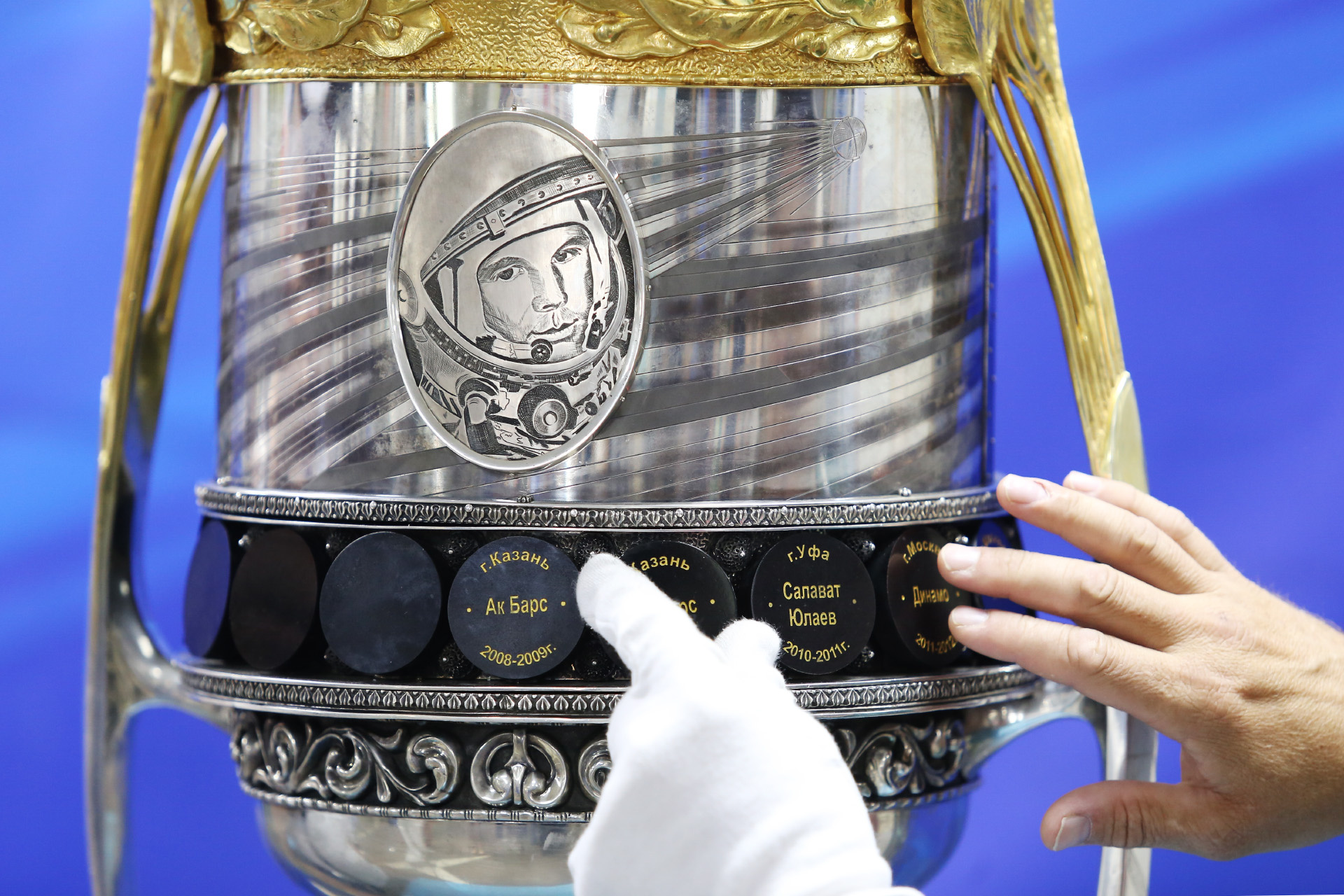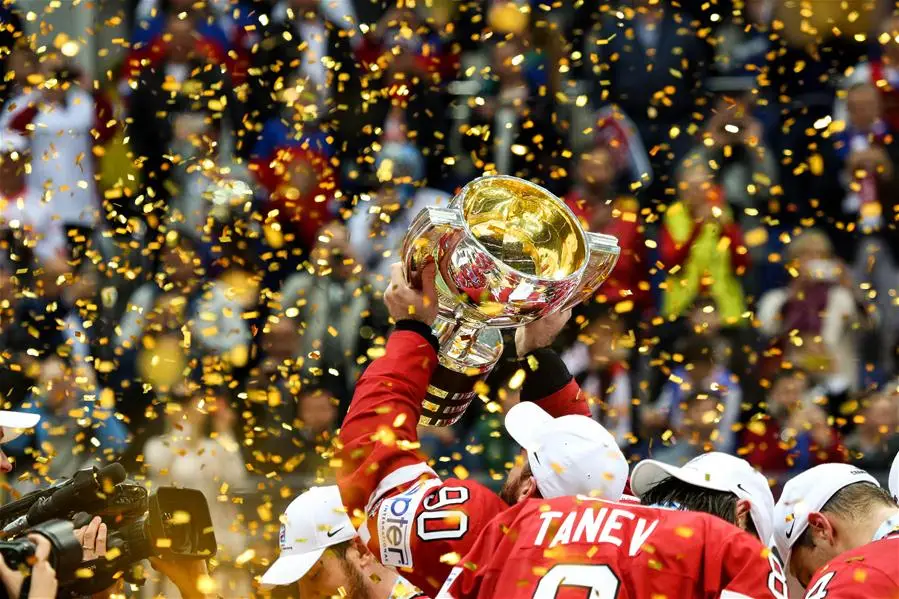Hockey is a symbol of resilience, speed and team spirit. Cinema films transform the sport into art, where drama, emotion and passion create incredible stories. Films about ice hockey reflect both triumphs and defeats, making you believe in the strength of the team and the will to win.
‘Legend Number 17’ – a story based on true events
In 2013, director Nikolai Lebedev presented the world with one of the most emotional and dramatic Soviet films about ice hockey. The plot is based on the true story of the legendary ice hockey player Valery Kharlamov, who became a symbol of the USSR’s ice hockey greatness. Screenwriters Alexei Kazakov and Nikolai Kulikov tried to trace the athlete’s path from his first steps on the ice to his outstanding career as accurately as possible. The events take place against the backdrop of a tense confrontation between the USSR and Canada.
Great struggle and drama
The picture shows an incredible fight and the desire to win. The biggest fight with the Canadian pros on the ice of Montreal was the climax not only for the plot, but also for the career of Kharlamov himself. His tenacity and will to win is reflected in every scene where the viewer can literally feel the ice under his feet and the onslaught of the Canadian players.
The Mighty Ducks’ is a comedic look at the game.
The Mighty Ducks’ is a classic of American family cinema, made in 1992 by director Steven Herek. The foreign film tells the story of former ice hockey player and current lawyer Gordon Bombay, who finds himself forced to coach a children’s team despite not liking the sport. The film combines the competitive spirit with the carefree nature of childhood and shows how hockey can bring very different people together. The script takes a unique look at the sport in the United States and focuses on important life lessons.
How a coach inspires a team
The role of coach Gordon Bombay, played by Emilio Esteves, was pivotal. He inspires the boys and helps them to believe in themselves, even when everything is against them. Bombay’s training methods are not only disciplined but also humorous, which helps him gain the children’s trust. The coach not only teaches hockey moves, but becomes a mentor to each young athlete. This approach makes the film a real comedy that will touch the hearts of viewers of all ages.
The training scenes, in which the children repeatedly get into funny situations, make the film light and attractive. The humour makes hockey accessible to all and makes the ice rink a place of fun and support.
‘Secrets of Professional Hockey’ – the rise and fall of an ice hockey legend
 Shot in Canada, this ice hockey film shows the lives of professional ice hockey players from the closest possible point of view. The story shows how the players reach the top and what they have to sacrifice for their careers. Canada, a country with a deep-rooted hockey tradition, was the perfect setting for this film.
Shot in Canada, this ice hockey film shows the lives of professional ice hockey players from the closest possible point of view. The story shows how the players reach the top and what they have to sacrifice for their careers. Canada, a country with a deep-rooted hockey tradition, was the perfect setting for this film.
How players change the world of sport
The film shows that the life of a professional ice hockey player is not just about fame, but also about constant challenges. Many of them inspire the younger generation with their achievements and resilience. Their influence on sport and society cannot be overestimated. The film was a milestone in the portrayal of hockey in world cinema. The storyline revealed the true essence of the sport: the incredible struggle, the tears and the joy of victory.
‘Red Machine’ – the spirit and strength of the USSR
The film tells about the legendary hockey team of the USSR, which not only once amazed the world with its achievements. At the centre of the plot is the historic confrontation with the Canadian national team in a series of Summit Series games in 1972, events that epitomised the Cold War on the ice.
Strategy and team
The teamwork and tactics of the USSR national team were unique. Their training was based on strategy and detailed game plans that made them unstoppable on the ice. This team proved their superiority time and time again against all odds and showed that success is the result of total hard work and discipline. In every moment of the film, the audience feels the genuine passion.
The personalities of the great players
The film also shows the personalities of great players, such as Vladislav Tretiak and Valery Kharlamov. The biographies of these athletes are inspiring and show that legends are not born – they become them thanks to years of hard work and the pursuit of excellence.
‘Mr Hockey: The Gordie Howe Story’ is about a sports legend
The film tells the story of one of the most important figures in the history of ice hockey – Gordie Howe. This Canadian athlete became a symbol of resilience and skill, his career spanned an incredible 32 years, including seasons in the NHL and WHA. Hockey on film through the prism of an athlete’s life shows not only the glorious moments, but also the hard work behind every victory.
Strength of character and athletic perseverance
Howe’s story is one of incredible strength of character. At the age of 45, he returned to the ice to play alongside his sons on the Houston Aeros team. Such perseverance is inspiring and shows that age is just a number and true spirit knows no bounds.
‘Miracle on Ice’ – the story of an incredible victory for the United States
The film describes the legendary victory of the US team at the 1980 Winter Olympics, a victory that went down in history as a true miracle. A young American team, made up of students and amateurs, was able to beat the mighty Soviet team and show that belief in success and teamwork can achieve incredible things. This film is rightly regarded as one of the best ice hockey films ever made. Herb Brooks, the coach of the US national team, played a key role in this victory. His methods were strict but effective, and it was thanks to his leadership that the team was able to achieve the impossible.
Conclusion
 Exciting games, dramatic moments, colourful personalities – all this makes ice hockey films unforgettable. Above all, however, they teach us valuable life lessons. Perseverance, determination, teamwork – qualities that are useful in every area of life. When we watch these films, we learn to overcome difficulties, believe in ourselves and achieve our goals.
Exciting games, dramatic moments, colourful personalities – all this makes ice hockey films unforgettable. Above all, however, they teach us valuable life lessons. Perseverance, determination, teamwork – qualities that are useful in every area of life. When we watch these films, we learn to overcome difficulties, believe in ourselves and achieve our goals.



 The Gagarin Cup is not just an award for the teams, but a true symbol of recognition of their skills and perseverance. It epitomises not only a sporting achievement, but also team unity and the ability to work together towards a common goal.
The Gagarin Cup is not just an award for the teams, but a true symbol of recognition of their skills and perseverance. It epitomises not only a sporting achievement, but also team unity and the ability to work together towards a common goal. The Gagarin Cup has become a true symbol of the KHL, uniting teams, fans and the entire hockey community. It symbolises the toughness, talent and will to win that make hockey one of the most exciting games. Every team dreams of etching their name in the Cup’s history, as it is a symbol of true hockey expertise and the pursuit of new heights.
The Gagarin Cup has become a true symbol of the KHL, uniting teams, fans and the entire hockey community. It symbolises the toughness, talent and will to win that make hockey one of the most exciting games. Every team dreams of etching their name in the Cup’s history, as it is a symbol of true hockey expertise and the pursuit of new heights.
 When it comes to refereeing, every detail counts, as the game is played at breakneck speed and any mistake can cost a team victory.
When it comes to refereeing, every detail counts, as the game is played at breakneck speed and any mistake can cost a team victory. Ball hockey is very interesting, also due to well thought-out rules. Study the peculiarities of the sport discipline in more depth if you want to learn to play well.
Ball hockey is very interesting, also due to well thought-out rules. Study the peculiarities of the sport discipline in more depth if you want to learn to play well.
 Penalties are an integral part of the game, which makes it even more dynamic. There are several types of penalties: minor, major and disciplinary. A minor penalty means two minutes in the penalty box: the team remains in the minority. A major penalty is imposed for serious offences such as a brawl and lasts five minutes. A disciplinary penalty can mean a ban of ten minutes or even the rest of the game. Each penalty changes the dynamics of the game and forces teams to reorient themselves and find new ways of defending and attacking.
Penalties are an integral part of the game, which makes it even more dynamic. There are several types of penalties: minor, major and disciplinary. A minor penalty means two minutes in the penalty box: the team remains in the minority. A major penalty is imposed for serious offences such as a brawl and lasts five minutes. A disciplinary penalty can mean a ban of ten minutes or even the rest of the game. Each penalty changes the dynamics of the game and forces teams to reorient themselves and find new ways of defending and attacking. The rules of ice hockey not only make the game fair and truly exciting. Knowing the set standards helps fans to better understand the intricacies and players to improve their skills and avoid mistakes. Try attending a game once to see how interesting and exciting the game is when you know it inside out.
The rules of ice hockey not only make the game fair and truly exciting. Knowing the set standards helps fans to better understand the intricacies and players to improve their skills and avoid mistakes. Try attending a game once to see how interesting and exciting the game is when you know it inside out.
 Hockey players are very superstitious when it comes to this trophy. One of the most famous rules is that no one can touch the Cup until they have earned it. It is believed that touching it before winning brings bad luck, and many athletes strictly adhere to this rule. This reverent attitude creates a unique aura around the award, where every little thing has its own meaning.
Hockey players are very superstitious when it comes to this trophy. One of the most famous rules is that no one can touch the Cup until they have earned it. It is believed that touching it before winning brings bad luck, and many athletes strictly adhere to this rule. This reverent attitude creates a unique aura around the award, where every little thing has its own meaning. The Stanley Cup is more than just an award. It is a symbol of passion, struggle and an unyielding will to win. For its sake, hockey players are willing to go through trials and sacrifices. Every team dreams of one day lifting this Holy Grail of hockey above their heads. There is nothing more significant and coveted in the ice world than the Stanley Cup – it is the most prestigious hockey trophy that symbolises the pinnacle of sportsmanship and perseverance.
The Stanley Cup is more than just an award. It is a symbol of passion, struggle and an unyielding will to win. For its sake, hockey players are willing to go through trials and sacrifices. Every team dreams of one day lifting this Holy Grail of hockey above their heads. There is nothing more significant and coveted in the ice world than the Stanley Cup – it is the most prestigious hockey trophy that symbolises the pinnacle of sportsmanship and perseverance.



 Patrick Roy has always been known for his emotional style of play. His passion for hockey was evident in every movement and dive for the puck. From the very beginning of his career, Roy showed incredible dedication and determination. His hockey journey began at a young age in Quebec, and with each passing year he demonstrated phenomenal progress. Already in 1984, he made his debut in the NHL for the Montreal Canadiens, where he made a real splash.
Patrick Roy has always been known for his emotional style of play. His passion for hockey was evident in every movement and dive for the puck. From the very beginning of his career, Roy showed incredible dedication and determination. His hockey journey began at a young age in Quebec, and with each passing year he demonstrated phenomenal progress. Already in 1984, he made his debut in the NHL for the Montreal Canadiens, where he made a real splash. Hockey’s best goalies are true masters of their craft, capable of changing the game with a single move. Their legendary saves and incredible dedication have made the sport what it is today: dynamic, spectacular and unpredictable. The goalies spoken of – Tretiak, Roy and Gashek – will forever remain symbols of courage and skill. Each of them has made an invaluable contribution to the development of world hockey.
Hockey’s best goalies are true masters of their craft, capable of changing the game with a single move. Their legendary saves and incredible dedication have made the sport what it is today: dynamic, spectacular and unpredictable. The goalies spoken of – Tretiak, Roy and Gashek – will forever remain symbols of courage and skill. Each of them has made an invaluable contribution to the development of world hockey.
 Ice hockey players receive extra points for goals scored, assists and team victories. For each goal scored, a player can receive between 200,000 and 500,000 roubles, depending on the importance of the game and the level of the opponent.
Ice hockey players receive extra points for goals scored, assists and team victories. For each goal scored, a player can receive between 200,000 and 500,000 roubles, depending on the importance of the game and the level of the opponent. The salaries of KHL players are a complex mechanism that depends on many factors: performance on the ice, experience, participation in important games and even the details of the contract terms. Highly paid stars such as Alexander Radulov or Vyacheslav Voynov earn tens of millions of roubles per year, but their income is not limited to the base salary – bonuses play an important role.
The salaries of KHL players are a complex mechanism that depends on many factors: performance on the ice, experience, participation in important games and even the details of the contract terms. Highly paid stars such as Alexander Radulov or Vyacheslav Voynov earn tens of millions of roubles per year, but their income is not limited to the base salary – bonuses play an important role.
 The discipline is widely popular in Russia, Sweden, Finland and Mongolia. In these countries, it has received the status of a national sport, and championship matches attract tens of thousands of spectators.
The discipline is widely popular in Russia, Sweden, Finland and Mongolia. In these countries, it has received the status of a national sport, and championship matches attract tens of thousands of spectators. Types of hockey are amazing in their diversity and uniqueness. Each of them has its own special atmosphere, rules and traditions. No matter which one you prefer, they all offer incredible emotions, team spirit and physical activity. Choose your path and enjoy the game in every form.
Types of hockey are amazing in their diversity and uniqueness. Each of them has its own special atmosphere, rules and traditions. No matter which one you prefer, they all offer incredible emotions, team spirit and physical activity. Choose your path and enjoy the game in every form.
 Even in his 40s, Jagr was still playing at the highest level and was an example of tremendous fitness. His focus on physical fitness and discipline in training enabled him to stay in great shape despite his age. And his drive to constantly improve made him one of the toughest and most adaptable players of all time. Throughout history, the best hockey players in the world have hailed Jagr as an example of physical excellence.
Even in his 40s, Jagr was still playing at the highest level and was an example of tremendous fitness. His focus on physical fitness and discipline in training enabled him to stay in great shape despite his age. And his drive to constantly improve made him one of the toughest and most adaptable players of all time. Throughout history, the best hockey players in the world have hailed Jagr as an example of physical excellence. The best ice hockey players in the world are those who, through their play, make the sport of ice hockey as unique and spectacular as we know it. These players have managed to exceed expectations, change the game and inspire generations. Train, learn from their examples, and maybe your name will be among the best hockey players in world history.
The best ice hockey players in the world are those who, through their play, make the sport of ice hockey as unique and spectacular as we know it. These players have managed to exceed expectations, change the game and inspire generations. Train, learn from their examples, and maybe your name will be among the best hockey players in world history.
 Canada is the birthplace of hockey, and the legends here have become symbols of the most sincere and honest sport. Wayne Gretzky, who is called “The Great One”, and Mark Messier, with his leadership qualities, are icons whose names are still heard today.
Canada is the birthplace of hockey, and the legends here have become symbols of the most sincere and honest sport. Wayne Gretzky, who is called “The Great One”, and Mark Messier, with his leadership qualities, are icons whose names are still heard today. The best representatives of the ice battles continue to inspire us not only with their achievements, but also with their passion, diligence and love for the game. Hockey legends show that it is possible to remain relevant and beloved even after decades. Let their stories inspire a new generation of hockey players to even greater accomplishments. After all, it’s more than a game, it’s a legacy that unites us and teaches us to strive for the best.
The best representatives of the ice battles continue to inspire us not only with their achievements, but also with their passion, diligence and love for the game. Hockey legends show that it is possible to remain relevant and beloved even after decades. Let their stories inspire a new generation of hockey players to even greater accomplishments. After all, it’s more than a game, it’s a legacy that unites us and teaches us to strive for the best.
 The chronicle is full of colourful names and events. Famous hockey players of the past have become true symbols of the nation, and their merits continue to inspire new players. Valery Kharlamov, Alexei Kasatonov, Sergei Makarov – names and surnames that have gone down forever in the history of Russian ice hockey.
The chronicle is full of colourful names and events. Famous hockey players of the past have become true symbols of the nation, and their merits continue to inspire new players. Valery Kharlamov, Alexei Kasatonov, Sergei Makarov – names and surnames that have gone down forever in the history of Russian ice hockey. Sporting contests on the ice are more than just a sport in the Russian Federation. It is a symbol of national pride, unity and struggle. The history of Russian ice hockey is a chronicle of overcoming difficulties, victories and defeats that have shaped the character of the nation. Today’s generations continue the traditions of their predecessors and play on the ice with the same passion as the legends of the past.
Sporting contests on the ice are more than just a sport in the Russian Federation. It is a symbol of national pride, unity and struggle. The history of Russian ice hockey is a chronicle of overcoming difficulties, victories and defeats that have shaped the character of the nation. Today’s generations continue the traditions of their predecessors and play on the ice with the same passion as the legends of the past.





